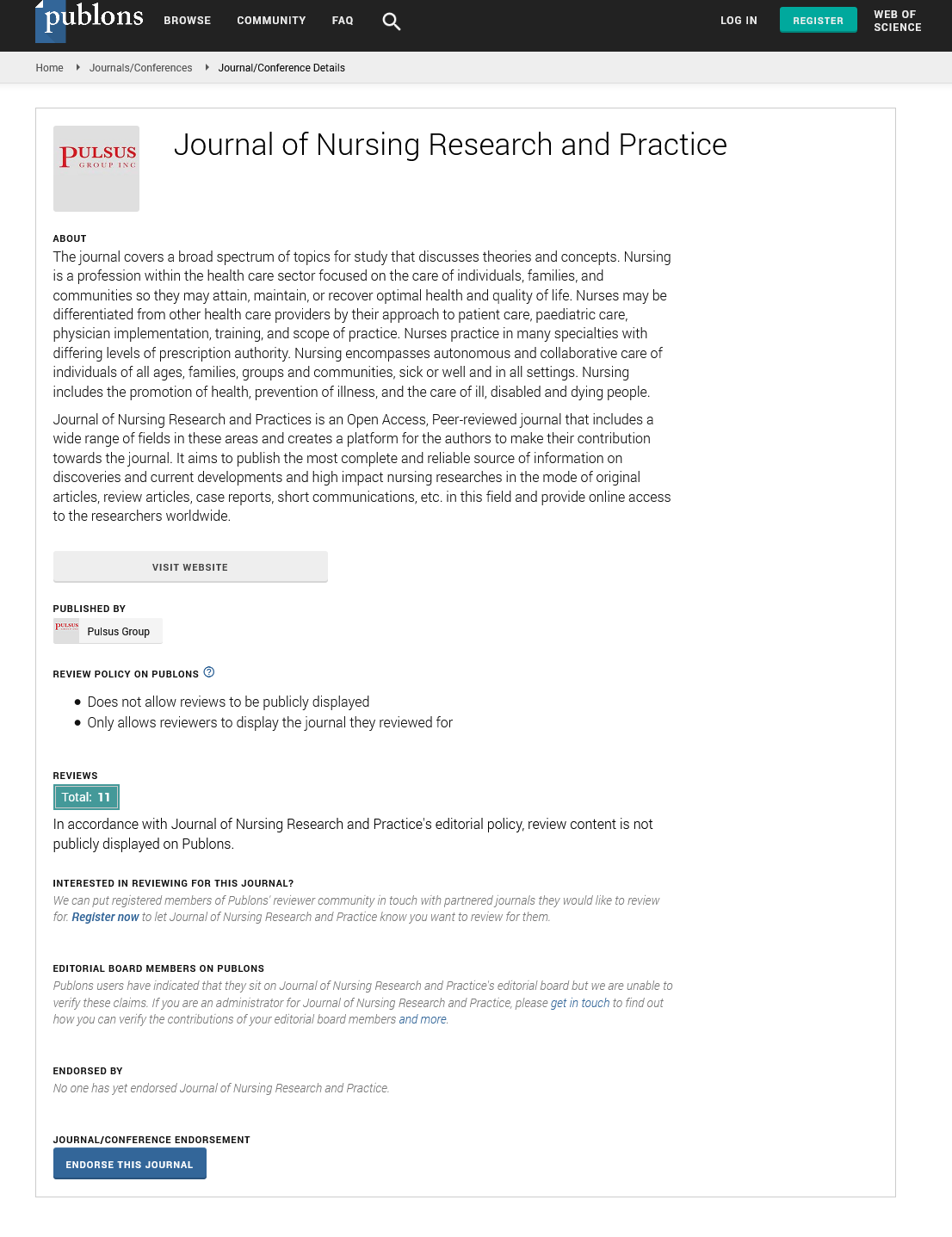A case series for the evaluation of dalbavancin in vancomycin allergic patients
Received: 02-Nov-2022, Manuscript No. PULJNRP-22-5816; Editor assigned: 04-Nov-2022, Pre QC No. PULJNRP-22-5816(PQ); Accepted Date: Nov 28, 2022; Reviewed: 17-Nov-2022 QC No. PULJNRP-22-5816(Q); Revised: 24-Nov-2022, Manuscript No. PULJNRP-22-5816(R); Published: 30-Nov-2022, DOI: DOI: 10.37532/ Puljnrp .22.6(11).174-175
Citation: Diaz S. A case series for the evaluation of Dalbavancin in vancomycin allergic patients. J Nurs Res Pract. 2022; 6(11):174-175.
This open-access article is distributed under the terms of the Creative Commons Attribution Non-Commercial License (CC BY-NC) (http://creativecommons.org/licenses/by-nc/4.0/), which permits reuse, distribution and reproduction of the article, provided that the original work is properly cited and the reuse is restricted to noncommercial purposes. For commercial reuse, contact reprints@pulsus.com
Abstract
AIM: Considering the possibility of cross-reactivity between the two glycol-peptide antibiotics, there is a dearth of information about the usage of Dalbavancin in individuals with a Vancomycin allergy.
METHODS: Patients who received Dalbavancin as an outpatient infusion and had a reported Vancomycin allergy in the electronic health record were subjected to a retrospective medical record analysis between February 2016 and February 2021.
FINDINGS: During the trial period, Dalbavancin was infused as an outpatient in 559 distinct patients, 10 of whom had a Vancomycin allergy that was noted in the electronic health record. One patient experienced delayed rash, two patients reported a reaction to Vancomycin infusion, two patients reported acute kidney damage, and one patient reported intolerance with general malaise. Four of the ten patients had a history of a type I IgGmediated reaction to Vancomycin. Dalbavancin was administered to all 10 patients at least once, with no side effects being reported.
Key Words:
Patients, Antibiotics, Vancomycin, Dalbavancin
INTRODUCTION
albavancin, a semi-synthetic lipo glycopeptide antibiotic structurally related to Vancomycin, is indicated for treating acute bacterial skin and skin structure infections brought on by susceptible gram-positive bacteria. It offers a complete course of therapy in a single 30-minute infusion, typically as an outpatient procedure. Clinical use has been useful in situations requiring protracted antibiotic therapy, such as osteomyelitis, infections of artificial joints, infective endocarditis, and blood stream infections associated to catheter use, and spontaneous bacterial peritonitis. Gram-positive bacteria are included in the range of action, most notably methicillin-resistant Staphylococcus aureus. Vancomycin is an example of an antibiotic in the glycopeptide class that also includes a hepta peptide core, raising questions about potential cross-sensitivity events. The package insert for Dalbavancin carries a warning for usage in patients who have a glycopeptide allergy due to this risk and the extended plasma of this medication. Dalbavancin lipophilic side chains lessen the possibility of Vancomycin cross-sensitivity. A case report using graded challenge and a case series of patients with a probable diagnosis of drug reaction with eosinophilia and systemic symptoms caused by Vancomycin that were tested ex vivo to Dalbavancin and suggested cross-reactivity to be very low have previously described successful Dalbavancin use in patients with a prior hypersensitivity reaction to Vancomycin. We present a case series of actual patients who received at least one dose of Dalbavancin in an outpatient setting and had a Vancomycin allergy noted in their electronic health record.
Method
We created a computerized list of every adult patient who received Dalbavancin at two different health systems in the Southeast of the United States: Methodist Healthcare of Memphis and St. Joseph's/Candler Health System. For patients who received Dalbavancin as an outpatient infusion and had a Vancomycin allergy noted in the EHR, a retrospective assessment of their medical records was carried out from February 2016 to February 2021. Each patient's demographic information.
Result
During the trial period, Dalbavancin was administered as an outpatient infusion to 559 distinct patients, 10 of whom had a Vancomycin allergy that was recorded in the EHR. The Dalbavancin infusion’s details and patient features are outlined. The patients were mostly White, had a mean age of 62.8 years, and 50% of them were female. The average person was 171.11 cm tall and weighed 103.87 kg. At baseline, all patients were afebrile, and the majority had white blood cell counts.
DISCUSSION
In this case series, Dalbavancin is used effectively in individuals who self-report having an allergy to Vancomycin. Long-established first-line therapies for ABSSSIs and invasive methicillin-resistant S aureus infections include Vancomycin. Targeting of greater trough concentrations has led to an increase in the adverse effects of Vancomycin, such as nephrotoxicity. AUC monitoring is now advised by recent guidelines to maintain effectiveness while limiting acute renal damage, but adoption.
CONCLUSION
These data may increase clinician confidence in the use of Dalbavancin for patients with a self-reported Vancomycin allergy because of the rising use of Dalbavancin as a potential option for early discharge and/or hospital admission avoidance, as well as the potential increased time required to monitor Vancomycin to prevent adverse effects.






